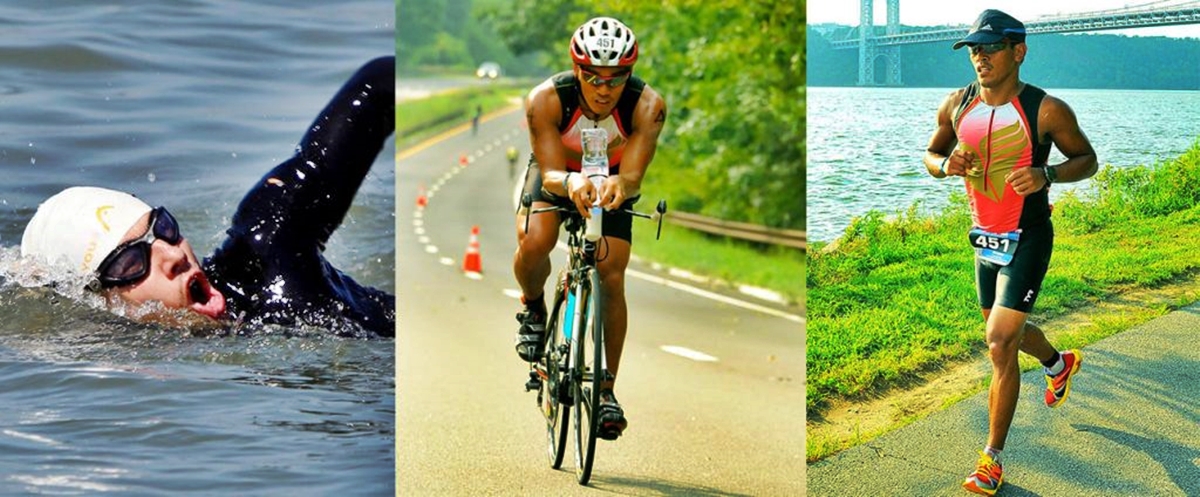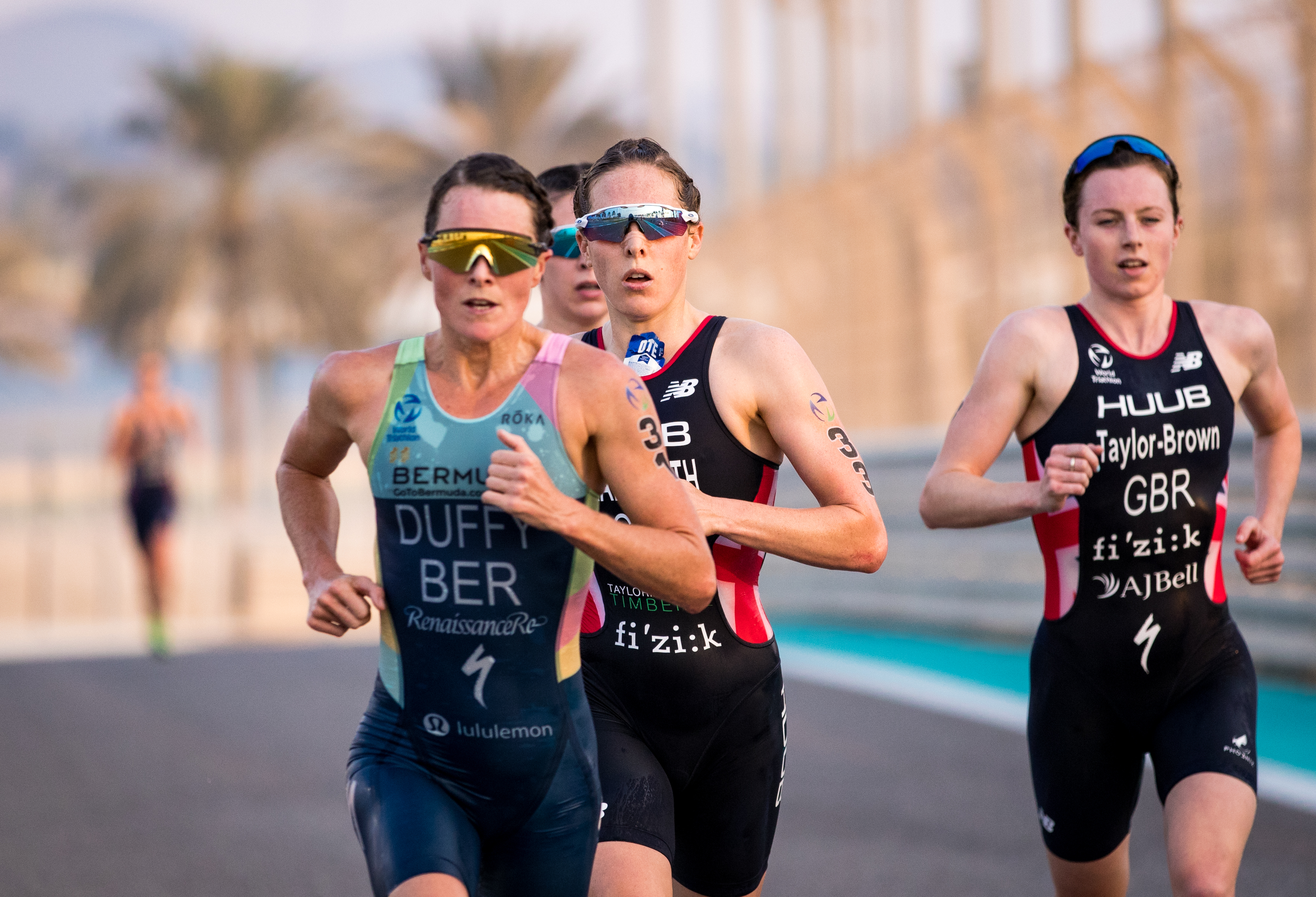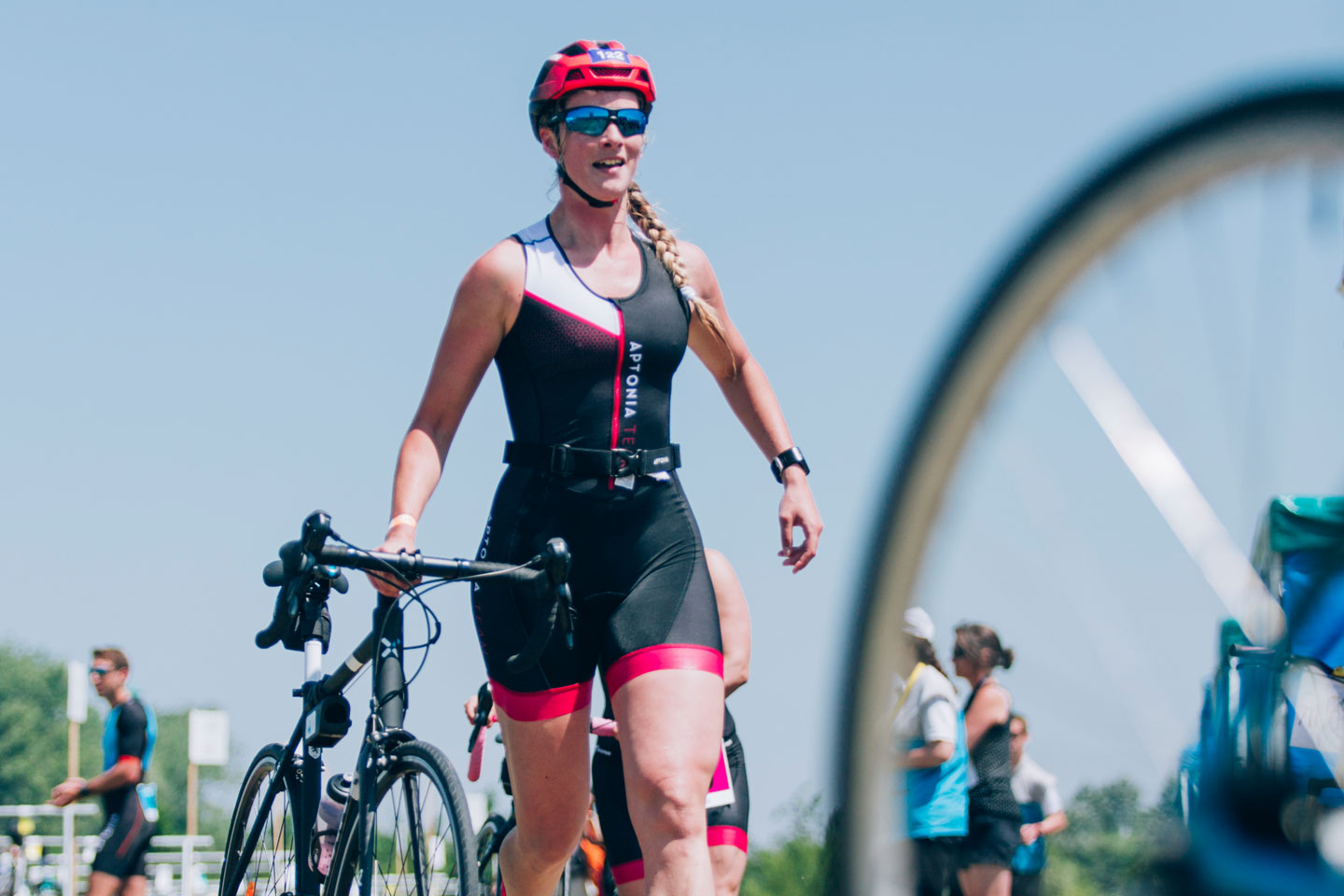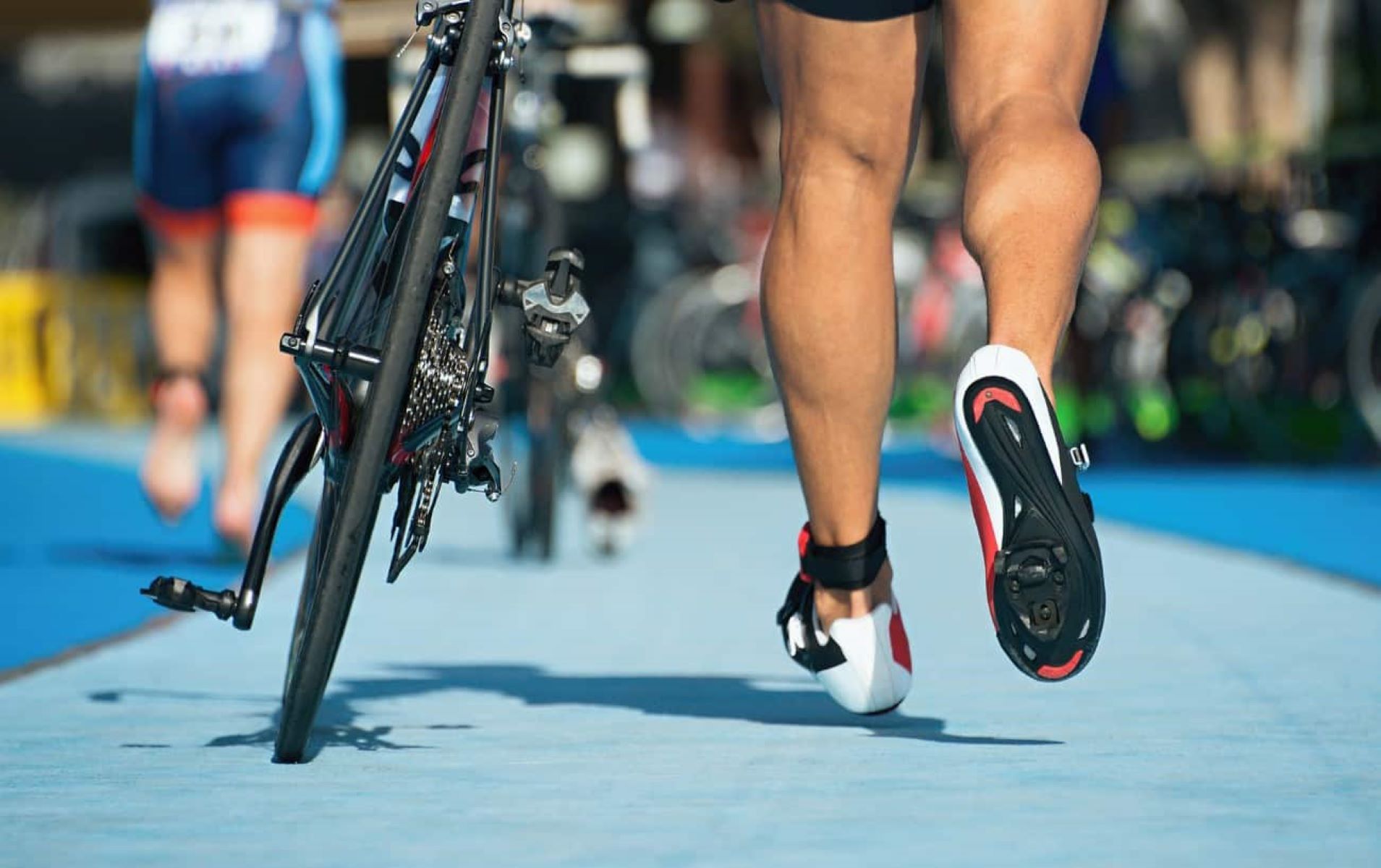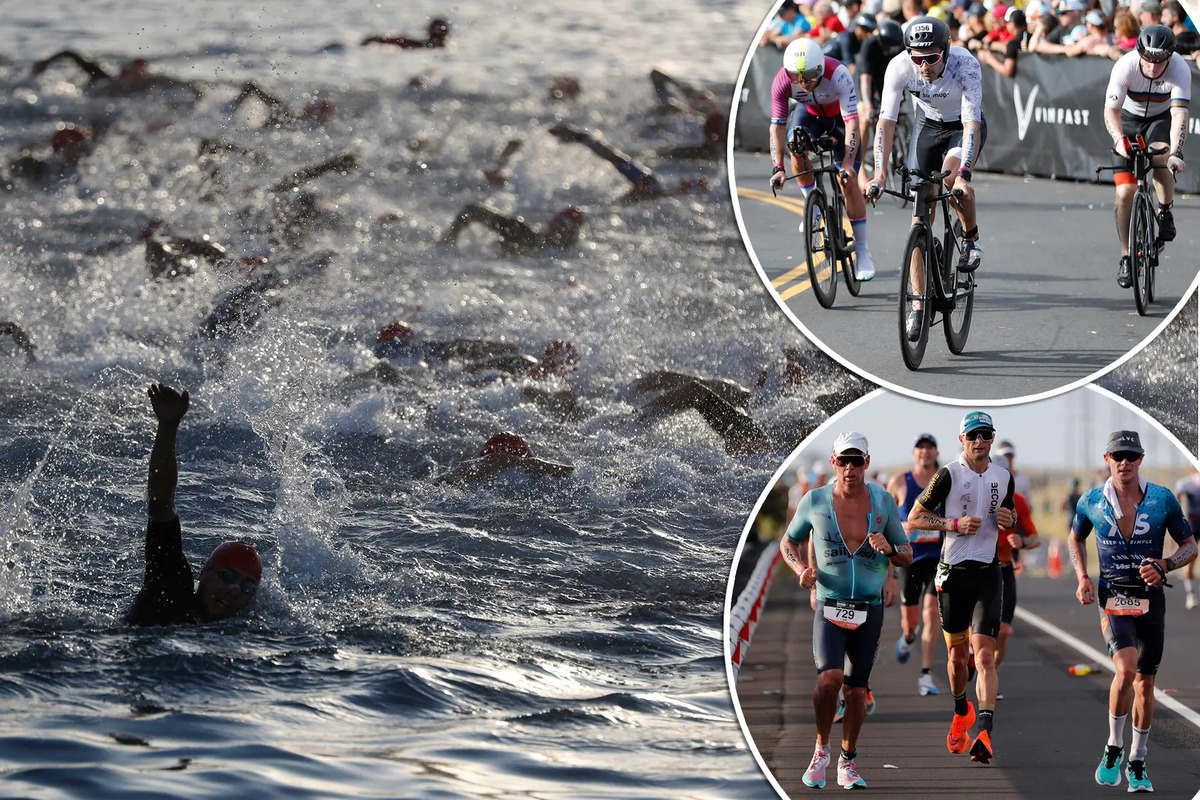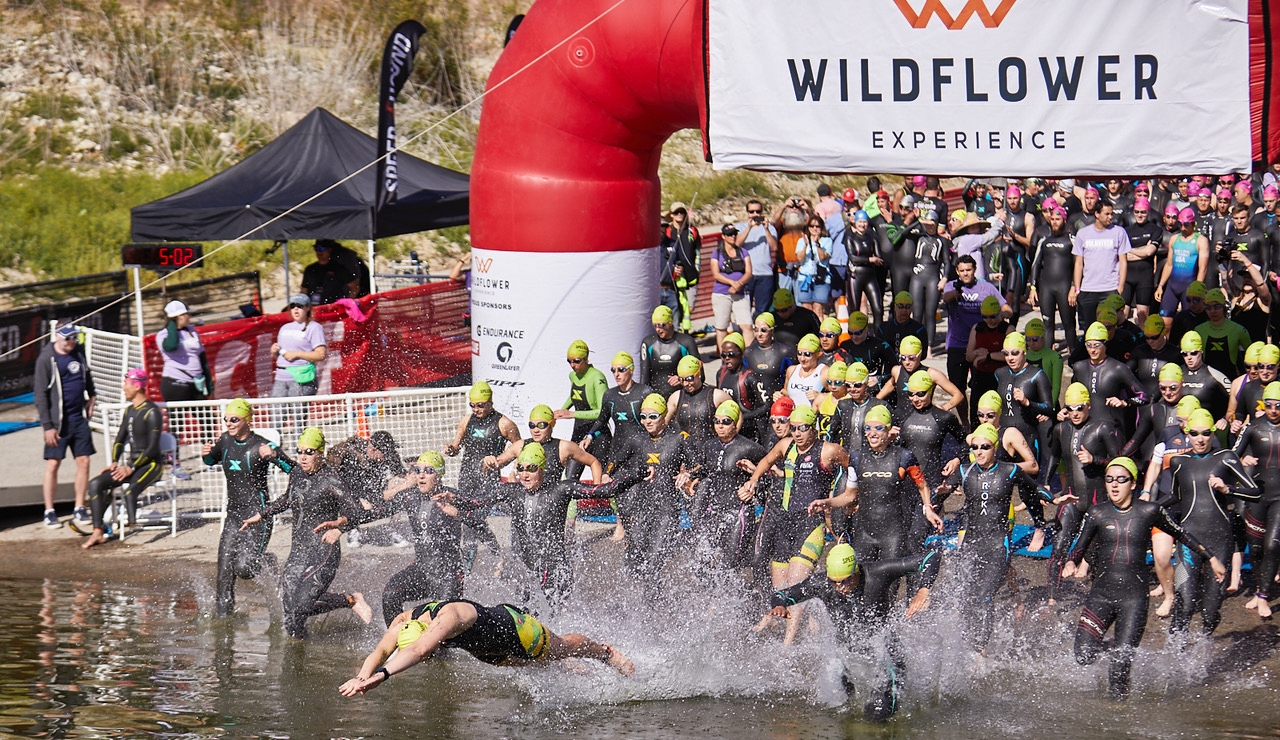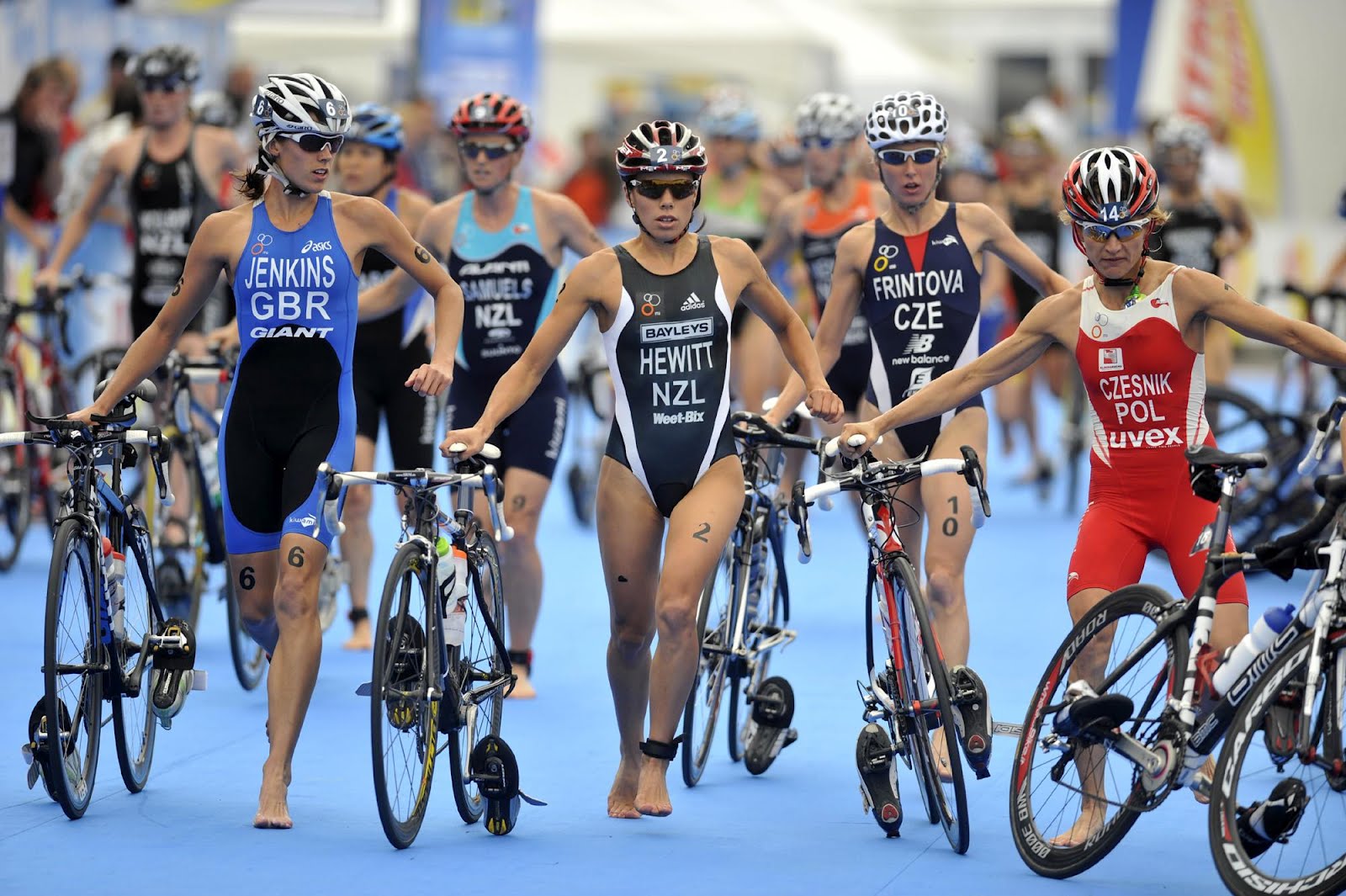Home>Misc>Featured>How To Train For A Sprint Triathlon 6 Weeks
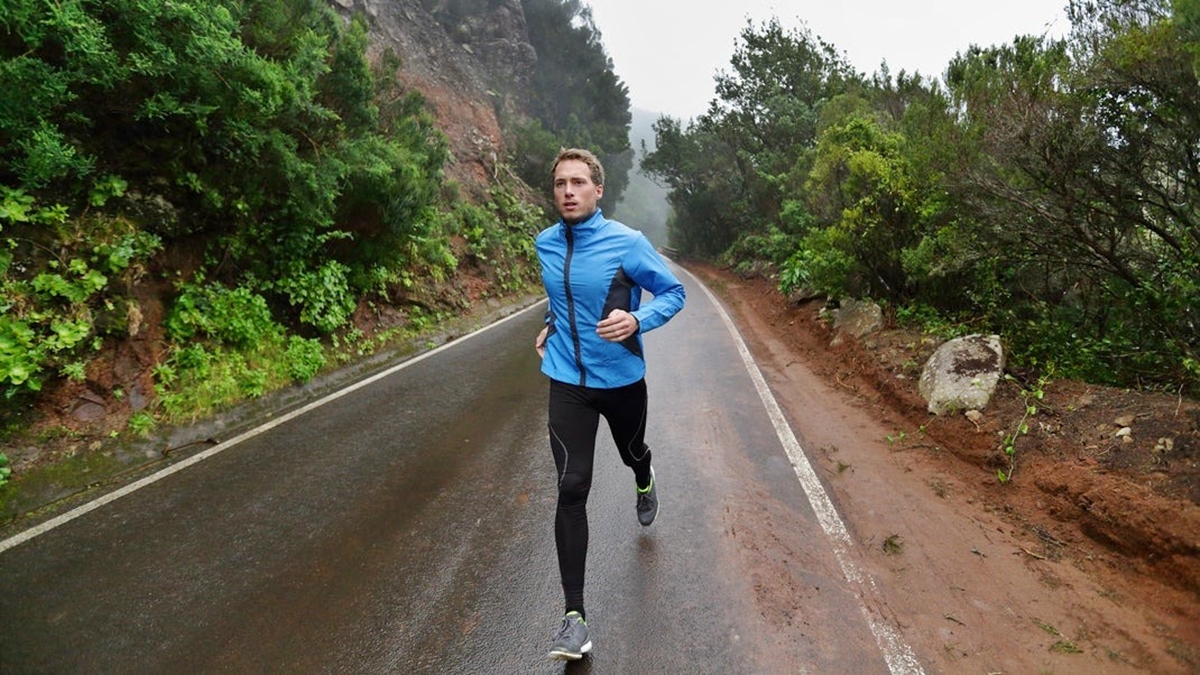

Featured
How To Train For A Sprint Triathlon 6 Weeks
Modified: August 19, 2023
Looking to train for a sprint triathlon in just 6 weeks? Get featured tips and tricks to help you prepare for the race and conquer each discipline.
Introduction
Training for a sprint triathlon can be a challenging and rewarding experience. Combining swimming, cycling, and running, this multi-discipline event pushes your body to new limits and requires a well-rounded fitness routine. Whether you’re a beginner looking to take on your first sprint triathlon or a seasoned athlete aiming to improve your performance, a well-designed training plan is essential.
Over the course of six weeks, you can prepare your body and mind for the demands of a sprint triathlon. This article will guide you through each week of training, providing tips and insights to help you maximize your training efficiency and optimize your race day performance.
It’s important to note that every person’s fitness level and training requirements can vary, so be sure to listen to your body and make adjustments as needed. Consulting with a coach or a healthcare professional can also provide valuable guidance throughout your training journey.
During the six weeks leading up to your sprint triathlon, you will focus on gradually building your endurance, increasing your speed and power, improving your transitions, and fine-tuning your race strategy. By following a well-structured training plan and incorporating proper recovery and nutrition, you can set yourself up for success on race day.
Before embarking on your training journey, ensure that you have the necessary equipment for each discipline. This includes a swim cap, goggles, a well-fitting wetsuit (if allowed), a road bike or triathlon bike, a helmet, cycling shoes, running shoes, and appropriate clothing for all weather conditions. With the right gear and a positive mindset, you’re ready to dive in and begin your sprint triathlon training!
Week 1: Establishing a Training Routine
The first week of training for a sprint triathlon is all about establishing a consistent training routine. This routine will serve as the foundation for your future weeks of training, ensuring that you have a structured plan to follow.
During week 1, focus on completing each discipline of the triathlon: swimming, cycling, and running. Start with shorter distances and durations to ease your body into the training routine. For example, you might begin with a 500-meter swim, a 5-mile bike ride, and a 2-mile run. The goal is to build the habit of training consistently rather than pushing yourself too hard too soon.
In addition to the three disciplines, it’s crucial to incorporate rest days into your training schedule. Rest days are just as important as training days, as they allow your body to recover and prevent overtraining. Use these days to stretch, foam roll, or engage in light cross-training activities like yoga or walking.
During week 1, it’s also helpful to establish a nutrition plan that supports your training goals. Focus on consuming a balanced diet with plenty of carbohydrates, lean proteins, and healthy fats to fuel your workouts and aid in recovery. Stay hydrated throughout the day, especially during your training sessions, to maintain optimal performance.
Remember to listen to your body and be mindful of any signs of fatigue or discomfort. It’s normal to experience muscle soreness as your body adapts to the new training routine, but pay attention to any persistent pain or injuries. If necessary, seek guidance from a healthcare professional or coach to ensure you’re on the right track.
By the end of week 1, you should have established a consistent training routine, completed workouts in each discipline, and started to become familiar with the demands of triathlon training. Congratulations on taking the first step towards your sprint triathlon journey!
Week 2: Building Endurance
As you progress into week 2 of your sprint triathlon training, the focus shifts towards building endurance. Endurance is key in a triathlon, as it allows you to sustain your energy levels throughout the race and maintain a steady pace. During this week, you’ll gradually increase the distance and duration of your workouts to build your stamina.
In the swimming discipline, aim to increase your swimming distance by about 10% compared to week 1. Work on your technique, focusing on maintaining a strong and efficient stroke. Incorporate interval training, alternating between moderate and high-intensity swimming to challenge your cardiovascular system and improve your endurance.
When it comes to cycling, extend your rides by about 5-10 miles depending on your starting fitness level. Practice maintaining a consistent pace and experiment with different terrains to diversify your training. Incorporate hill training to improve your leg strength and power, as it will come in handy during the race.
In the running discipline, gradually increase your running distance by about 1 mile. Remember to warm up before each run and incorporate intervals or tempo runs to enhance your endurance and speed. Focus on maintaining good form and stride efficiency throughout your runs.
As the workouts become more challenging, it’s crucial to prioritize recovery. Adequate rest and recovery days enable your body to adapt and become stronger. Use foam rolling and stretching to alleviate any muscle tightness or soreness. Pay attention to your nutrition, ensuring you’re fueling your body with quality nutrients and staying hydrated.
During week 2, take note of your progress and how your body is adjusting to the increased training load. Listen to any signals of overtraining or burnout and make adjustments as needed. Remember, it’s important to find the right balance between pushing yourself and allowing your body to recover.
By the end of week 2, you should start feeling more confident in your endurance capabilities and notice improvements in your overall fitness. Building a solid foundation of endurance is essential for successfully completing a sprint triathlon, so keep up the hard work!
Week 3: Increasing Speed and Power
In week 3 of your sprint triathlon training, the focus shifts towards increasing your speed and power. While endurance is important, incorporating speed and power training helps you improve your overall performance and race against the clock.
In the swimming discipline, include interval training sessions to boost your speed. Alternate between high-intensity sprints and recovery periods. For example, swim at maximum effort for 25-50 meters and then take a short rest before repeating. This type of training will improve your anaerobic capacity and help you swim faster during the race.
When it comes to cycling, incorporate structured interval workouts. These can involve various types of intervals like short, intense efforts followed by recovery periods or longer sustained efforts at a moderate pace. Use the interval training to push your limits and improve your cycling speed and power.
In the running discipline, include speed workouts such as interval training or tempo runs. Interval training involves alternating between high-intensity bursts of speed and recovery periods. Tempo runs involve running at a comfortably hard pace for an extended period. Both of these training methods will help improve your running speed and endurance.
While focusing on speed and power, don’t neglect endurance training completely. It’s still important to maintain your base level of endurance by including longer, steady-state workouts. This ensures that you have the necessary stamina for the triathlon.
As with previous weeks, recovery is crucial in week 3. Incorporate rest days and active recovery exercises like light swimming or cycling to allow your body to adapt and prevent overtraining. Pay attention to any signs of fatigue or injury and make adjustments to your training as needed.
In addition to physical training, mental preparation is also important during week 3. Visualize yourself performing well during the race and focus on positive self-talk. Engage in relaxation techniques to reduce any performance anxiety and improve your mental resilience.
By the end of week 3, you should start noticing improvements in your speed and power across all disciplines. Your body will be adapting to the increased training load, and you’ll be feeling more confident in your ability to tackle the sprint triathlon. Keep pushing yourself while maintaining a balance between intensity and recovery.
Week 4: Improving Transitions
In week 4 of your sprint triathlon training, the focus shifts towards improving your transitions between each discipline. Transitions can make a significant difference in your overall race time, so it’s essential to practice and refine your transition skills.
During this week, incorporate “brick” workouts into your training routine. A brick workout involves combining two disciplines back-to-back, simulating the transition from one discipline to another. For example, you can do a swim immediately followed by a bike ride or a bike ride followed by a run.
Brick workouts help your body adapt to the feeling of switching from one discipline to another, making the transition smoother on race day. Practice quick and efficient transitions, focusing on changing your gear, footwear, and mindset as you move from swim to bike or bike to run.
In addition to brick workouts, it’s important to practice specific transition drills. Set up a mock transition area at home or at a local park, complete with your bike, shoes, and any necessary gear. Practice laying out your equipment in an organized manner and rehearse the sequence of steps you’ll take during the transition.
During this week, pay attention to your overall race strategy. Analyze your previous training sessions, identify any areas of improvement, and make necessary adjustments. Focus on pacing yourself during each discipline to ensure you have enough energy for the entire race.
As you work on improving transitions, continue to maintain your endurance and speed training. Incorporate interval training sessions to maintain and improve your physical performance. Remember to give yourself adequate rest and recovery days to avoid overtraining and minimize the risk of injury.
Mental preparation is also important during this week. Visualize yourself smoothly transitioning between disciplines and maintaining focus and confidence throughout the race. Practice positive self-talk and reinforce your mental resilience.
By the end of week 4, you should notice improvements in your transition times and feel more comfortable switching between disciplines. These skills will contribute to a more efficient race performance and give you a competitive edge on race day. Keep refining your transitions and maintaining your training consistency as you progress towards your sprint triathlon.
Week 5: Practicing Brick Workouts
As your sprint triathlon training enters week 5, it’s time to focus on practicing brick workouts to further enhance your race day performance. Brick workouts, which combine two disciplines back-to-back, are an essential part of preparing your body for the unique demands of a triathlon.
During week 5, incorporate brick workouts into your training routine at least twice. Start with a swim followed immediately by a bike ride and then transition to a run. This sequence replicates the order of disciplines in a triathlon and helps your body adapt to the transitions. The goal is to simulate the physical and mental challenges of seamless switching between activities.
As you progress through the brick workouts, gradually increase the distance and intensity of each discipline. This will build your endurance and mental resilience. For example, start with a shorter swim, bike, and run during the first brick workout, and then increase the distance by 10-15% in subsequent workouts.
During the bike-to-run transition, be prepared for the change in muscle groups and the feeling of fatigue. Practice quickly and efficiently transitioning from cycling to running, including changing shoes, hydrating, and mentally preparing yourself for the run.
Focus on maintaining a consistent pace during the run segment of the brick workout. This will train your body to adjust quickly from biking to running and help you gauge your pacing during the run portion of the triathlon.
In addition to brick workouts, continue to incorporate endurance and speed training to maintain your overall fitness level. This can include longer endurance sessions, speed intervals, and hill training specific to each discipline.
As you progress through week 5, make sure to take care of your body by incorporating rest days and proper recovery techniques. Pay attention to any signs of overtraining or fatigue and modify your training intensity or volume as needed.
With each brick workout, you’ll become more comfortable with the transitions and build the mental and physical strength needed to push through the challenges of a triathlon. Use these sessions to fine-tune your race day strategies, improve your pacing, and reinforce your mental resilience.
By the end of week 5, you should feel confident in your ability to smoothly transition between disciplines and maintain a strong performance throughout the triathlon. Keep practicing your brick workouts and stay consistent with your training regimen as you approach the final week of preparation.
Week 6: Fine-tuning Your Race Strategy
Welcome to the final week of your sprint triathlon training! Week 6 is all about fine-tuning your race strategy and ensuring that you’re mentally and physically prepared for the big day.
During this week, focus on dialing in your race-day nutrition and hydration plan. Experiment with different pre-race meals to find what works best for you. Aim to consume a well-balanced meal the night before the race, rich in complex carbohydrates, lean proteins, and healthy fats. On the morning of the race, opt for a light, easily digestible meal that provides sustained energy.
Hydration is also crucial leading up to the race. Start hydrating a few days in advance and continue to sip on water throughout the day. On race day, have a hydration plan in place and make sure to replenish fluids during the race as needed.
During this week, review the race course and become familiar with any key landmarks or challenging sections. Visualize yourself navigating the course with confidence and focus. If possible, try to do a practice run or ride on portions of the course to get a feel for the terrain.
Additionally, practice pacing during your training sessions. This will help you maintain a consistent speed and energy level throughout each discipline. Know your target heart rate zones and use them as a guide during the race.
Use the final week to rest and recover before the race. Taper your training by reducing the volume and intensity, allowing your body to repair and recharge. Avoid any intense workouts in the days leading up to the race to ensure that you’re fresh and ready to give your best effort.
Mental preparation is key during week 6. Practice positive visualization exercises, imagining yourself crossing the finish line strong and achieving your goals. Create a race-day mantra or affirmation to boost your confidence and motivation.
During the final days before the race, organize your gear and double-check that everything is in working order. Lay out your race outfit, pack your transition bag with all the necessary items, and ensure that your bike is in proper condition.
Lastly, get a good night’s sleep before race day. Rest is essential for physical and mental recovery, so prioritize getting enough sleep to wake up feeling refreshed and ready to perform at your best.
By the end of week 6, you should feel confident in your training, have a solid race strategy in place, and be mentally prepared to tackle the sprint triathlon. Trust in your training and the hard work you’ve put in, and most importantly, enjoy the experience of the race and celebrate your accomplishments!
Conclusion
Congratulations on completing your six-week sprint triathlon training journey! Throughout the process, you’ve worked hard to build endurance, increase speed and power, improve transitions, and fine-tune your race strategy. Now, it’s time to put all that training into action and conquer the sprint triathlon.
Remember that the journey doesn’t end here. The lessons you’ve learned and the habits you’ve developed during your training will benefit you in future races and your overall fitness journey.
As you approach race day, stay confident in your abilities and trust in the training you’ve done. Focus on enjoying the experience and embracing the challenges that come your way. Remember that every participant has their own goals and motivations, so don’t compare yourself to others. Your only competition should be your own previous best.
On race day, start strong, maintain a steady pace, and listen to your body. Remember to fuel and hydrate properly throughout the race to sustain your energy levels. Stay in the present moment, taking one discipline at a time and utilizing the mental strategies you’ve practiced during your training.
After crossing the finish line, take a moment to celebrate your accomplishment. Whether it’s your first sprint triathlon or one of many, completing the race is an achievement to be proud of. Reflect on your journey, the progress you’ve made, and the lessons you’ve learned along the way.
Take the time to recover and rest after the race, allowing your body to recharge. Reflect on your performance and identify areas for improvement. Use this experience to set new goals for future races and strive for personal growth.
Lastly, don’t forget to acknowledge and appreciate the support you’ve received from friends, family, and fellow athletes throughout your training. Their encouragement and belief in you have played a significant role in your success.
Remember, a sprint triathlon is not just a physical accomplishment, but also a testament to your dedication, perseverance, and determination. Embrace the journey, embrace the challenge, and enjoy every step of the way. Best of luck on your sprint triathlon and future endeavors!
